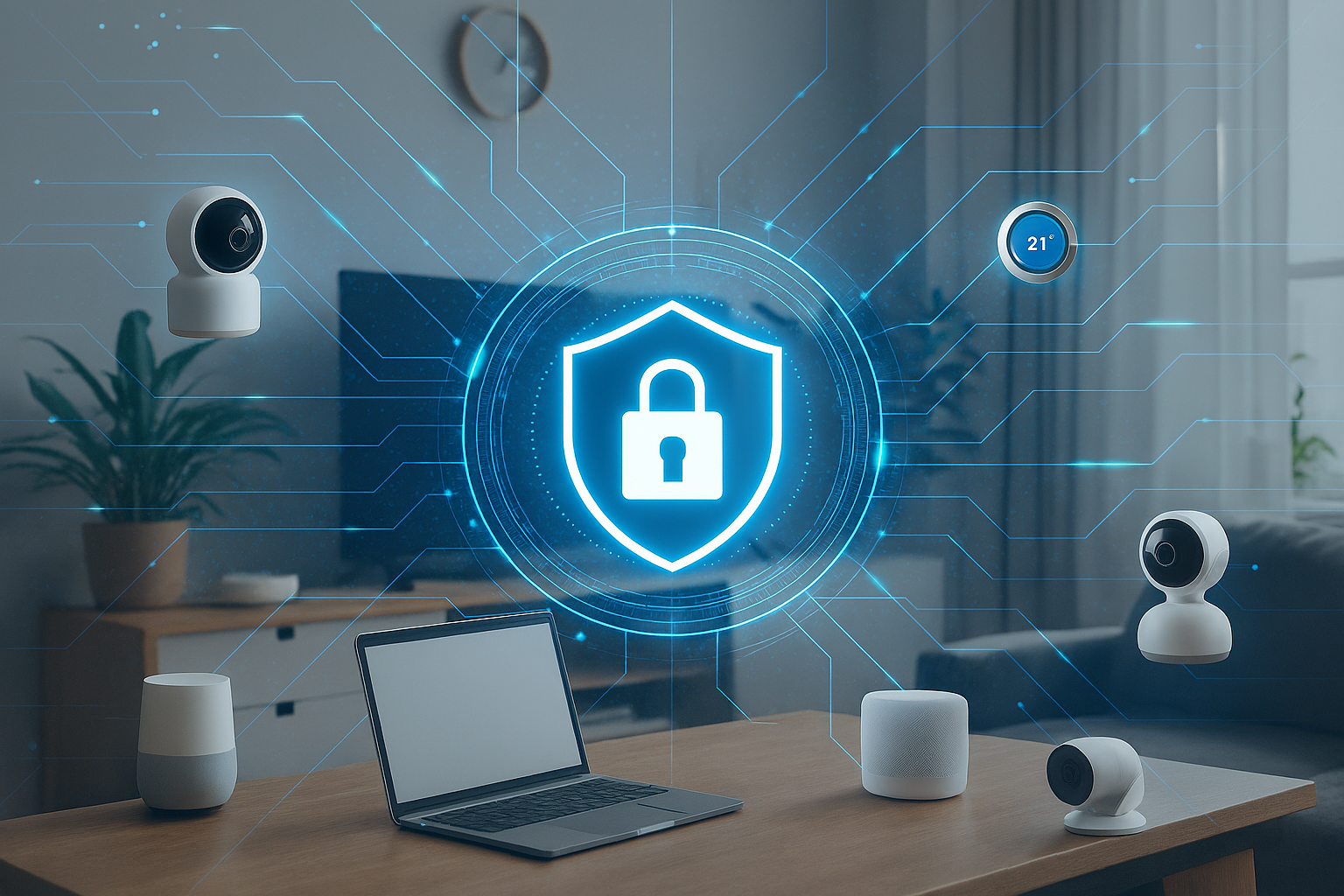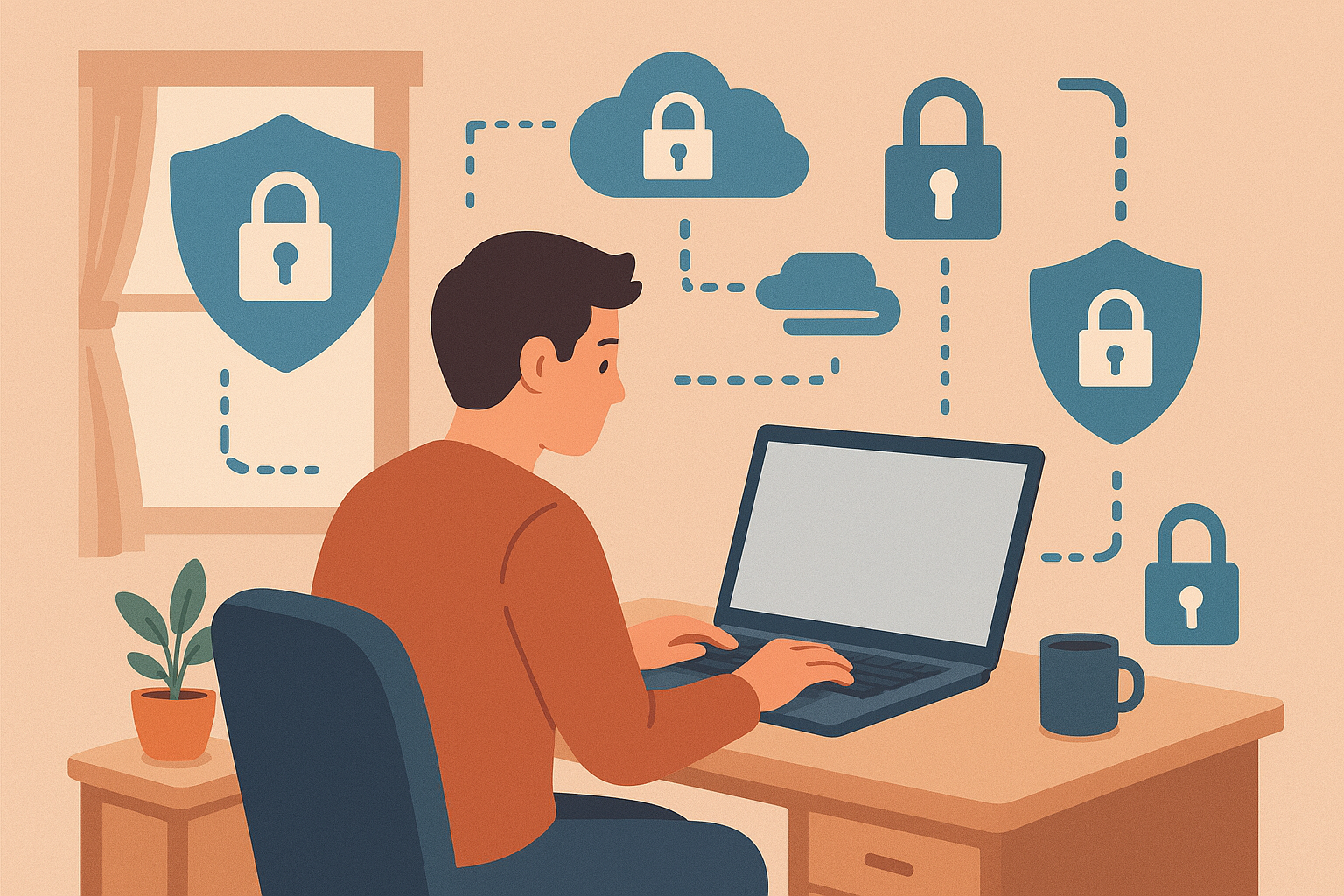Cybersecurity in IoT: Securing Smart Devices at Home and Work
In today’s connected world, smart devices are everywhere—from thermostats and cameras to office equipment and industrial sensors. The Internet of Things (IoT) has made life more efficient and convenient, but it has also opened new doors for cyber threats. Strengthening cybersecurity in IoT is no longer optional; it’s essential for protecting both personal and business data.
This article explores how IoT devices impact security, common vulnerabilities, and the best ways to secure these technologies in home and workplace environments.
Understanding the Internet of Things (IoT)
The Internet of Things (IoT) refers to a network of devices that connect and exchange data via the internet. These devices range from smart home gadgets to enterprise-level machinery. IoT enables automation and data sharing, but it also increases exposure to potential cyber risks if not properly secured.
As IoT adoption grows, so does the need for effective cybersecurity in IoT to protect sensitive information and prevent unauthorized access.
Why Cybersecurity in IoT Matters
Unlike traditional computing systems, many IoT devices have limited processing power and minimal security features. This makes them attractive targets for hackers who can exploit vulnerabilities to gain access to personal networks, confidential data, or even entire systems.
A compromised IoT device can lead to:
- Data breaches exposing sensitive information
- Device hijacking for unauthorized control or surveillance
- Network infiltration through unsecured endpoints
- Service disruptions in smart homes or critical business operations
These risks highlight why cybersecurity in IoT should be a priority for both individuals and organizations.
Common Security Risks in IoT Devices
- Weak or Default Passwords
Many IoT devices are shipped with simple, default passwords. Failing to change these credentials allows attackers easy access to devices and networks. - Lack of Regular Updates
Some manufacturers stop providing firmware updates shortly after release, leaving devices vulnerable to new threats. - Unencrypted Communication
Data transmitted between IoT devices and servers may be unencrypted, exposing it to interception or tampering. - Poor Network Segmentation
When IoT devices share the same network as personal or business systems, an attacker can easily move between them after a single breach. - Third-Party Vulnerabilities
Integration with external apps or platforms increases exposure to potential exploits from less secure sources.
Addressing these risks is critical to maintaining robust cybersecurity in IoT environments.
Securing Smart Devices at Home
Homeowners often prioritize convenience over security, but smart homes are just as vulnerable to cyber threats as corporate networks. Implementing strong cybersecurity in IoT practices can help protect your digital space.
1. Change Default Credentials
Always replace factory-set usernames and passwords with unique, strong ones. Use complex combinations of letters, numbers, and symbols.
2. Regularly Update Firmware
Check for and install firmware updates to patch vulnerabilities and improve device security.
3. Use a Separate Network
Create a separate Wi-Fi network exclusively for IoT devices. This isolates them from your main network and minimizes potential damage if one device is compromised.
4. Enable Multi-Factor Authentication (MFA)
If available, activate MFA for all smart device accounts. It adds an extra layer of verification that helps prevent unauthorized access.
5. Turn Off Unused Features
Disable features like remote access or voice control when not in use. Reducing exposure limits potential attack points.
By following these practices, homeowners can enhance cybersecurity in IoT and keep their connected devices secure.
Strengthening IoT Security in the Workplace
Businesses face even greater challenges in protecting IoT systems, especially with growing networks of connected devices for operations, logistics, and data collection.
1. Conduct Regular Security Audits
Regularly assess all connected devices to identify weak points and ensure compliance with security policies.
2. Implement Strong Network Segmentation
Separate IoT devices from critical systems like servers and employee workstations. This limits lateral movement during potential attacks.
3. Manage Device Access
Restrict device access to authorized users only. Apply role-based permissions to ensure that employees can only interact with systems relevant to their duties.
4. Use Endpoint Detection and Response (EDR)
Deploy EDR tools to monitor, detect, and respond to suspicious activities involving IoT devices.
5. Educate Employees
Train staff on best cybersecurity practices, including identifying phishing attempts, securing personal devices, and reporting irregular activity.
Workplace security depends on awareness and proactive management—key components of effective cybersecurity in IoT.
The Role of Artificial Intelligence in IoT Security
Artificial Intelligence (AI) and Machine Learning (ML) are playing an increasing role in IoT cybersecurity. They help detect unusual patterns, automate responses to potential threats, and predict vulnerabilities before exploitation occurs.
AI-driven solutions can analyze massive amounts of IoT data in real time, providing insights that traditional monitoring tools may overlook. This capability strengthens cybersecurity in IoT by improving detection speed and reducing false positives.
Best Practices for Long-Term IoT Protection
Maintaining long-term cybersecurity in IoT requires continuous effort. Here are key strategies to follow:
- Choose reputable brands that provide regular security updates.
- Replace outdated or unsupported devices.
- Back up important data stored or accessed through IoT devices.
- Use encryption for all data transfers.
- Monitor connected devices regularly for unusual activity.
These steps ensure that your IoT environment remains resilient against evolving cyber threats.
Conclusion
As smart technology becomes part of daily life, cybersecurity in IoT stands at the center of digital safety. Whether you’re securing smart home devices or managing enterprise IoT systems, prioritizing protection is vital to prevent data breaches and system compromises.
With a proactive mindset and consistent security practices, individuals and businesses can enjoy the benefits of IoT without sacrificing privacy or safety. The key is simple: secure every device, every connection, and every update—because in the connected world, security is everyone’s responsibility.




Comments are closed